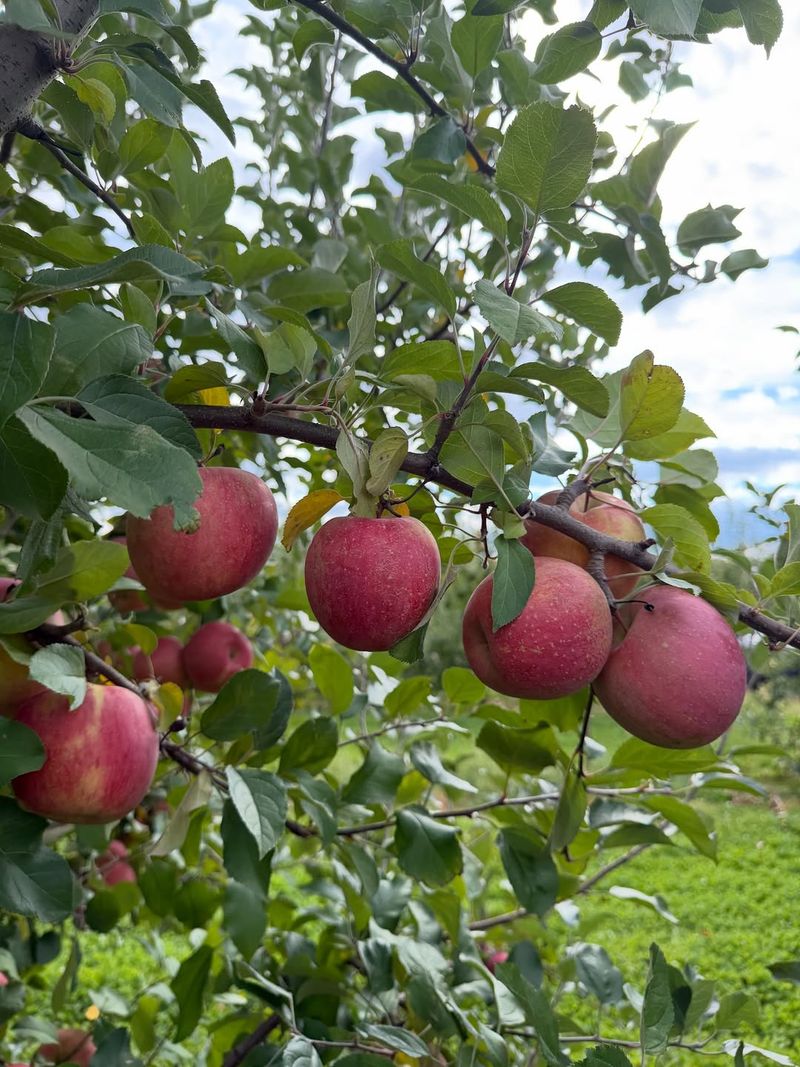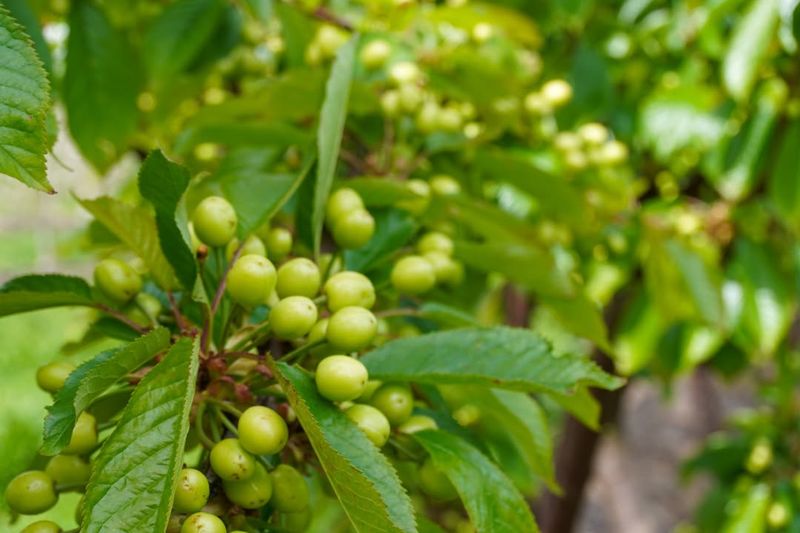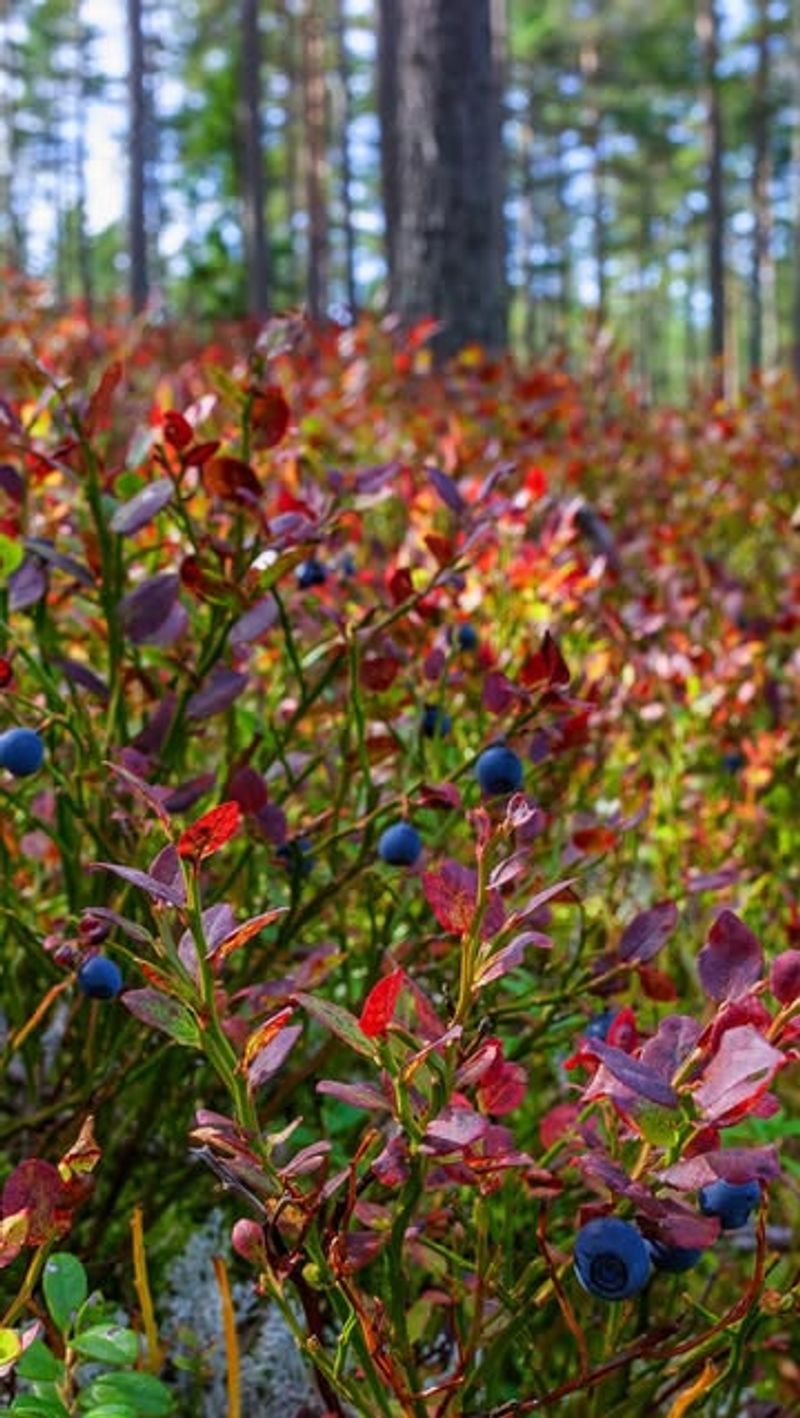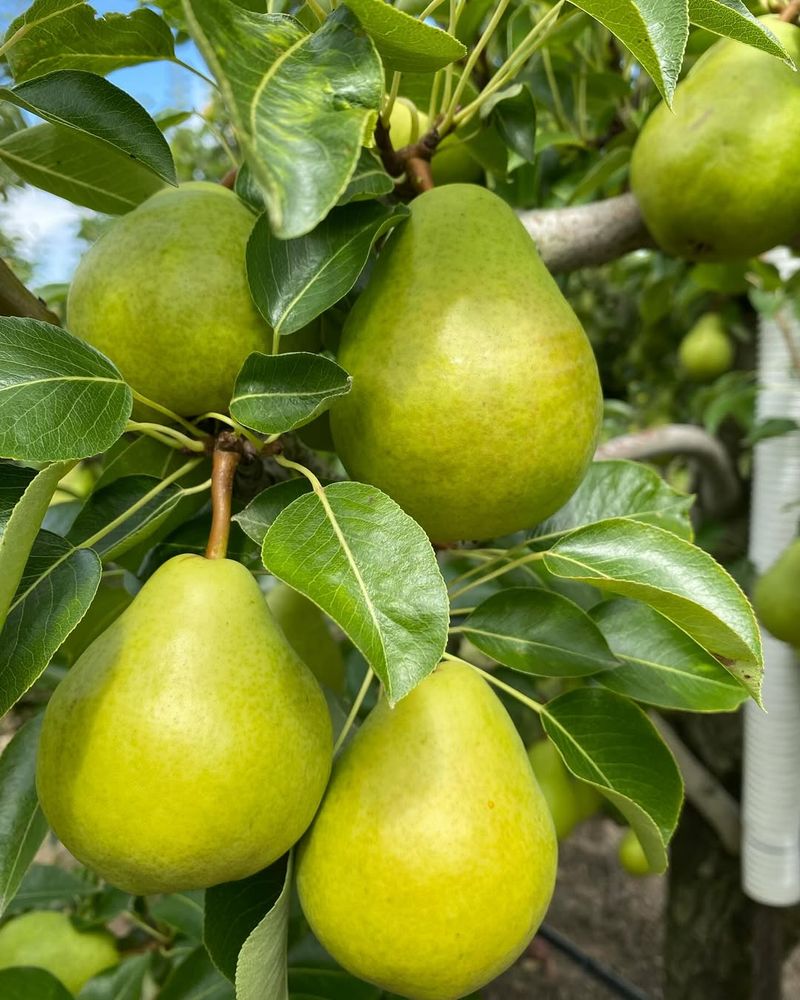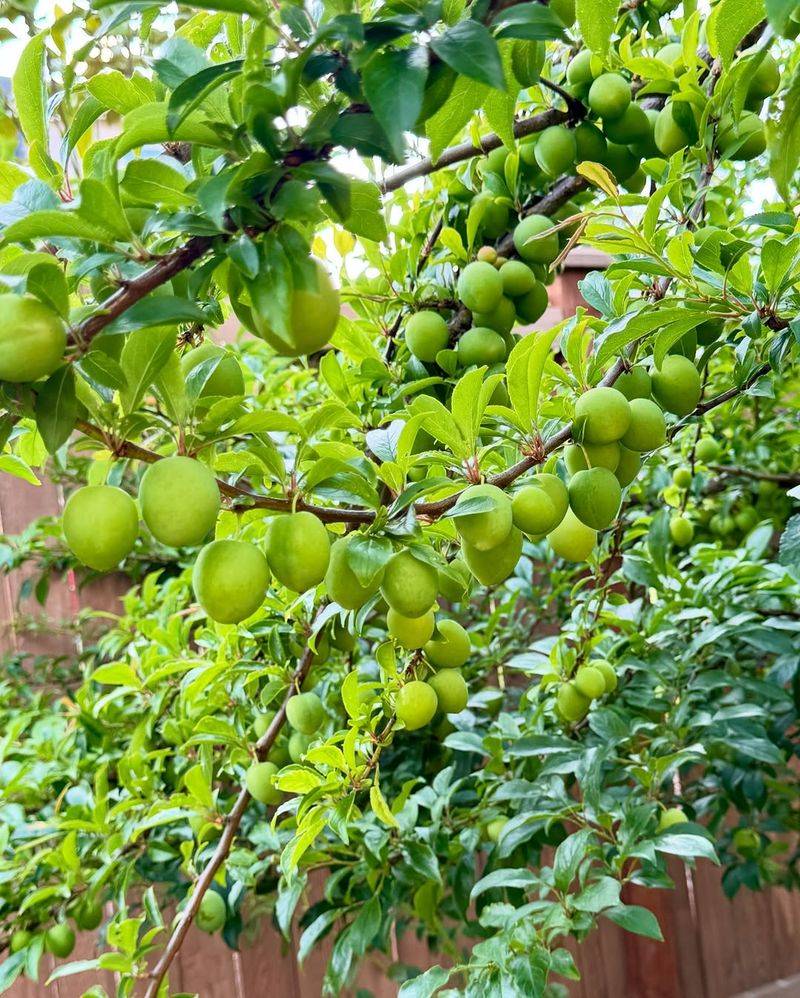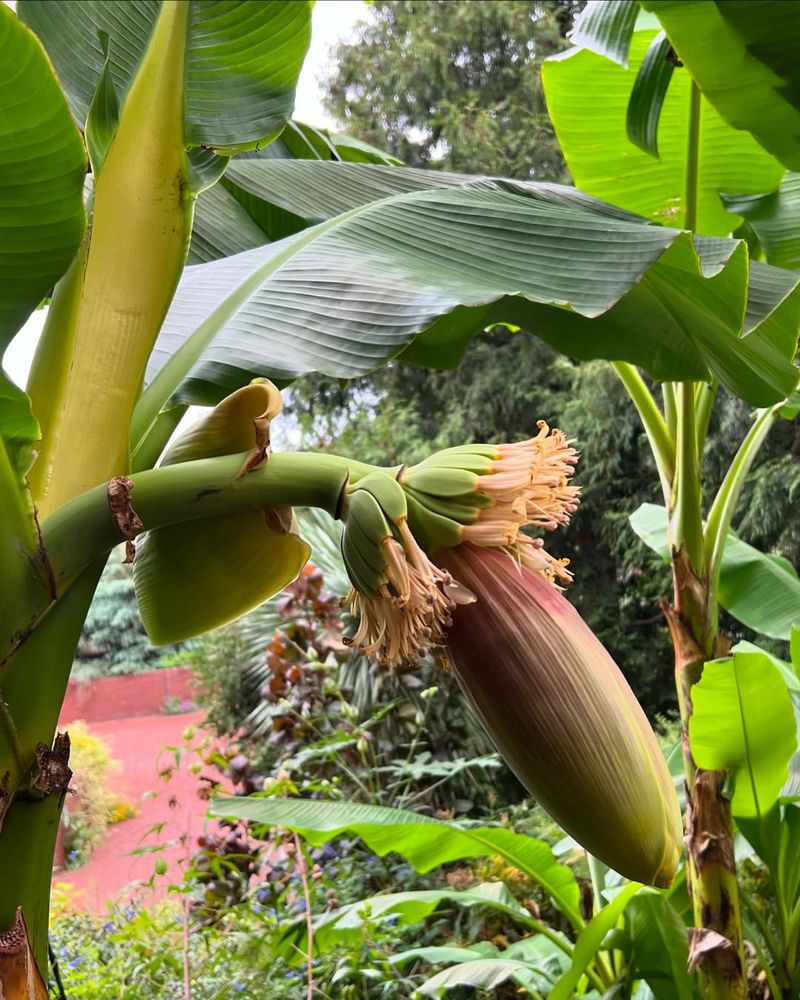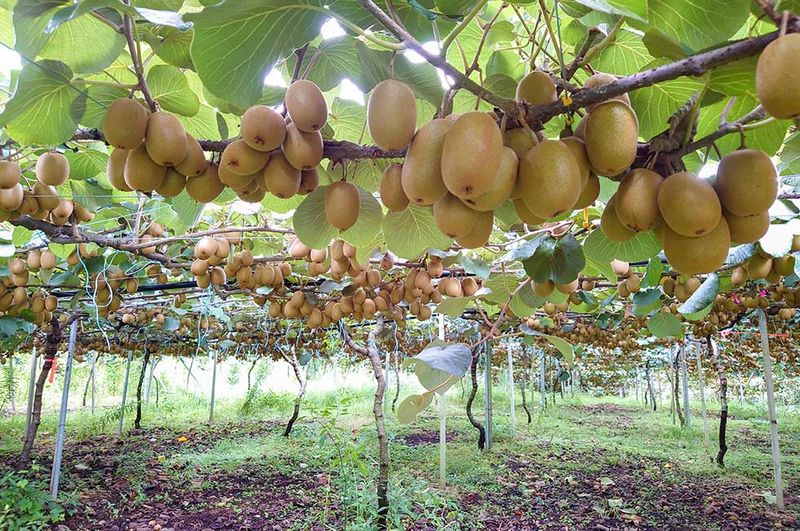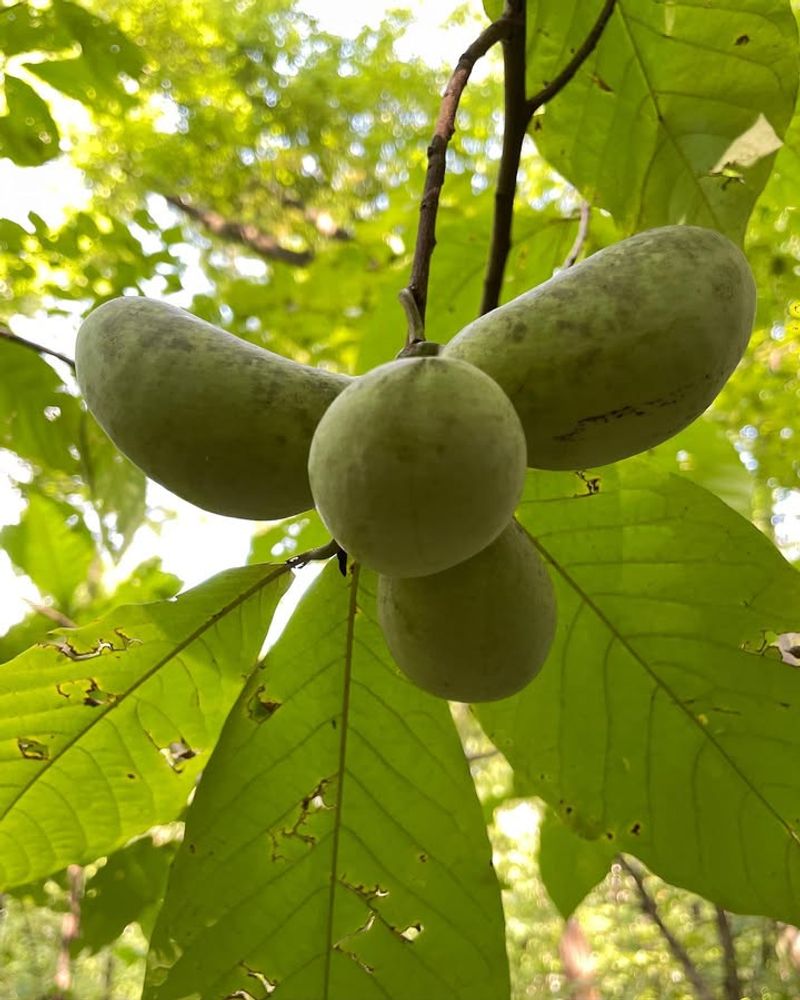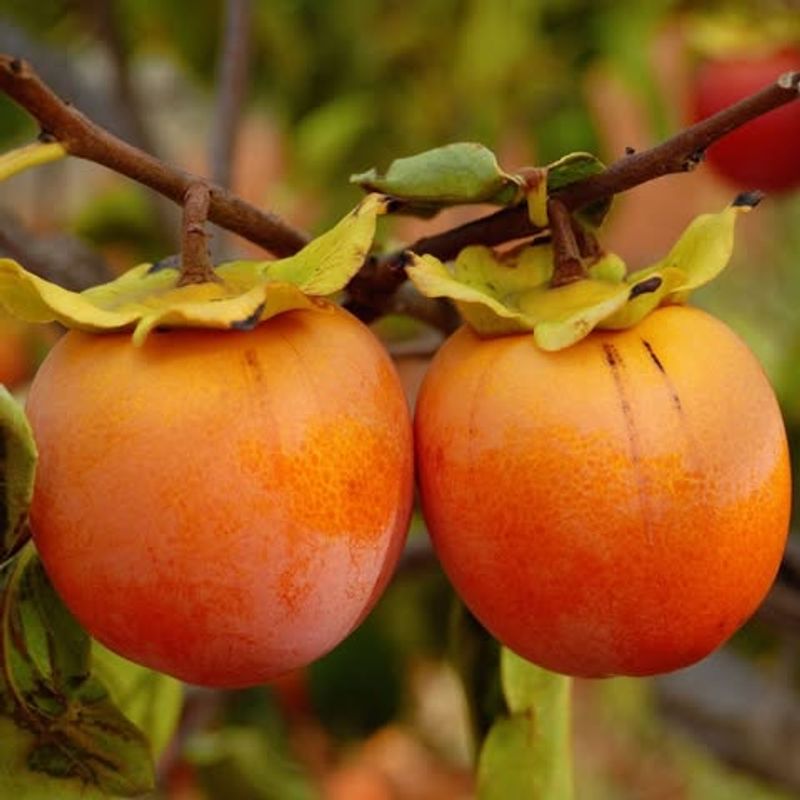Arizona’s heat can be tough on certain fruit trees, and I’ve watched a few promising ones struggle the moment summer hits full force. Some varieties simply aren’t built for the desert rhythm.
They look great at the nursery but lose steam fast once they’re planted. Knowing which ones don’t match Arizona’s climate saves you a lot of heartbreak later.
1. Apple Trees (Most Varieties)
Most apple varieties need something Arizona just can’t provide: cold winters with hundreds of chill hours. Without extended periods of temperatures between 32 and 45 degrees, apple trees won’t produce fruit properly.
Arizona’s mild winters leave these trees confused and unproductive. Even low-chill varieties struggle in many parts of the state, especially in lower desert regions where temperatures rarely drop enough.
Gardeners often watch their apple trees grow leaves but never see a single apple appear, making them a frustrating choice for Arizona landscapes.
2. Cherry Trees
Cherry trees crave cold weather that Arizona simply doesn’t experience regularly. Both sweet and sour cherry varieties require significant winter chill hours, typically 800 to 1,200 hours below 45 degrees.
In Arizona’s warm climate, cherry trees become stressed and vulnerable to pests and diseases. The hot, dry air also creates problems for these moisture-loving trees that prefer humid environments.
Even with careful watering, cherry trees struggle to set fruit in Arizona gardens, leaving homeowners disappointed after years of hopeful waiting.
3. Blueberry Bushes
Blueberries demand acidic soil with a pH between 4.5 and 5.5, but Arizona soil is notoriously alkaline, often measuring pH 7.5 or higher. Trying to acidify desert soil feels like fighting an uphill battle.
Beyond soil chemistry, blueberries need consistent moisture and cool temperatures that Arizona’s climate rarely provides. The intense summer heat stresses these delicate plants beyond recovery.
Even container-grown blueberries with amended soil struggle in Arizona, making them an impractical choice despite their popularity elsewhere in the country.
4. Cranberry Plants
Cranberries grow naturally in wet, boggy environments with constantly moist, acidic soil. Arizona’s desert conditions couldn’t be more opposite to what these water-loving plants require for survival.
Creating artificial bog conditions in the desert requires massive amounts of water and constant maintenance, making cranberries completely unsustainable. Arizona’s alkaline soil also conflicts with the acidic environment cranberries absolutely need.
The combination of wrong soil, insufficient moisture, and inappropriate climate makes cranberries one of the worst choices for Arizona gardeners seeking fruit-bearing plants.
5. Pear Trees (European Varieties)
European pear varieties like Bartlett and Bosc need substantial winter chill hours that Arizona typically cannot deliver. Without proper cold exposure, pear trees won’t develop flower buds or produce quality fruit.
Arizona’s early spring warmth tricks pear trees into blooming too soon, then late frosts damage the delicate flowers. The inconsistent temperatures confuse the trees’ natural cycles completely.
While Asian pear varieties show slightly better tolerance, European pears remain stubbornly unproductive in Arizona gardens, disappointing many hopeful fruit growers throughout the state.
6. Plum Trees (Japanese Varieties)
Japanese plum varieties require more chill hours than Arizona winters typically provide, especially in the lower desert regions. Without adequate cold exposure, flower production drops dramatically or stops entirely.
Arizona’s hot, dry climate also stresses Japanese plum trees, making them susceptible to sunburn, pests, and various diseases. The intense summer heat can damage both foliage and developing fruit.
Even when Japanese plums manage to produce some fruit in Arizona, the quality rarely matches what these trees produce in cooler climates with better conditions.
7. Avocado Trees (Most Types)
Most avocado varieties can’t handle Arizona’s freezing winter nights, even though the state feels warm during the day. Temperatures below 32 degrees damage or destroy avocado trees quickly.
Arizona’s low humidity and intense sun also cause problems for avocados, which prefer coastal conditions with morning fog and moderate temperatures. The dry desert air stresses these tropical trees constantly.
While a few cold-hardy varieties exist, most avocado types remain risky investments in Arizona, where one unexpected freeze can wipe out years of growth.
8. Banana Plants
Bananas are tropical plants that can’t tolerate Arizona’s winter cold, even in the warmest desert areas. Freezing temperatures turn banana leaves black and mushy, and the plants rarely recover completely.
Beyond cold sensitivity, bananas need constant moisture and high humidity that Arizona’s dry climate doesn’t naturally provide. The water requirements make them expensive and unsustainable to maintain properly.
While banana plants might survive summers in Arizona, winter cold inevitably damages them, making fruit production nearly impossible despite determined gardeners’ best efforts throughout the state.
9. Kiwi Vines
Kiwi vines need specific chill hours and consistent moisture levels that Arizona struggles to provide year-round. Without proper winter cold, these vigorous vines won’t set fruit despite producing abundant foliage.
Arizona’s low humidity and intense summer heat stress kiwi plants, causing leaf burn and reduced vigor. The vines also require extensive support structures and constant attention to watering needs.
Female and male plants both need identical growing conditions to produce fruit, doubling the challenge for Arizona gardeners attempting to grow these temperamental vines successfully.
10. Pawpaw Trees
Pawpaw trees naturally grow in shady, moist forest understories of the eastern United States, conditions completely opposite to Arizona’s sunny, dry environment. Shade and moisture are non-negotiable for pawpaws.
Arizona’s intense sunlight scorches pawpaw leaves, while the dry soil and low humidity prevent proper growth and fruit development. Pawpaws also need cold winters to satisfy their dormancy requirements.
Creating artificial forest conditions in Arizona requires extraordinary effort and resources, making pawpaws one of the most impractical fruit trees for desert gardeners to attempt.
11. Persimmon Trees (American Varieties)
American persimmon varieties prefer humid climates with consistent rainfall and rich, moist soil that Arizona simply cannot provide naturally. The dry desert air and alkaline soil create constant stress for these trees.
While Asian persimmons show better heat tolerance, American varieties struggle significantly in Arizona’s extreme conditions. The trees need more chill hours than many Arizona regions experience during typical winters.
Arizona gardeners who plant American persimmons often face disappointing results, with poor fruit production and stressed trees that never reach their full potential in the challenging climate.
12. Blackberry and Raspberry Canes
Blackberries and raspberries thrive in cool, moist climates with mild summers, making Arizona’s scorching heat completely unsuitable for these delicate berries. Summer temperatures above 90 degrees stress the canes severely.
Arizona’s intense sun burns the fruit before it ripens properly, while the dry air causes moisture stress that reduces both plant vigor and berry quality significantly.
Even with shade cloth and constant irrigation, berry canes struggle in Arizona gardens, producing disappointing harvests that rarely justify the effort and resources required for maintenance.


